H.Dannecker, G. Schick, 1802, Staatliche museum, Berlin, Germany
leather and gold decoration, shoes, 1790s
How do we choose our shoes? what makes us long for a pair of very pointed flats rather than round toed ballerinas?…
Fashionarchaeology has been musing over this question very much lately. Pointy flats are, after all, THE party shoe this 2013-14 festive season…
Looking back in history, points have come and gone several times over the centuries. Waves of “fads” or “fashions” which lasted centuries or just decades. Today they last barely one season and are always offered alongside a distinct alternative. Freedom of choice? maybe. So how do we decide which shape of shoe to go for? It would be great to say we follow our instinct, but of course our choice is always culturally determined. We can hardly desire what we do not know or can not yet imagine.
Etruscan, metal statuette, kore, last quarter 6th Century B.C., Metropolitan Museum of Art, New York USA
The Etruscans where master cobblers. Unlike Greek (and later, Roman women) Etruscan women were always represented wearing ankle-high, smooth and strong-looking, pointy booties. We have however very little information regarding this particular “local” fashion – or how and who produced it.
The “orient” (anywhere east of Athens) seems to be the common denominator for pointed footwear of the past. Pointy flat shoes were fashionable for women throughout the long Byzantine Empire
Enameled metal plaque, Empress Irene (detail from the Pala d’Oro), 10th Century, Basilica di San Marco, Venice, Italy
Gold stamped, leather shoes, Byzantine, 6th – 9th Centuries , Walters museum, Baltimore, USA
The higher the status the greater the decoration, empresses such as Irene, wore red pointed slippers encrusted with gems and pearl embroidery.
In Christian iconography females are always depicted with footwear, never barefoot. Their feet were covered by pointed shoes and hidden by long floor-length garments (just as their hair was safely tucked away under veils). Women’s feet thus become taboo…
Benedetto Antelami, Deposition from the cross (detail: women), 1178, Parma cathedral, Italy
The real “pointy shoe fashion moment” in history however, comes with the French Revolution. By 1795-6 French women were reinventing their fashion identity in the aftermath of the worst years of the Revolution – when dress had become a matter of life and death
Andrea Appiani, Rose Beauharnais (Mme Josephine Rose Bonaparte from 1797), 1796, p.c.
During the years of the Directoire women like Rose Beauharnais (Napoleon gave her the name Josephine as he found Rose too vulgar) were turning to the art of classical antiquity for fashion inspiration. In the early years of neoclassical dressing, sandals were the most obvious choice – but also a semi closed shoe like the light blue one she is wearing in the portrait.
I have never seen examples of surviving sandals from this period, but I have seen many utterly wonderful examples of very pointed “flats” (heels were totally out of fashion)
Green leather shoe, cut out detail filled with silk embroidered linen, late 1790s, V & A, Lon, Uk
French fashion plate, 1801
Three shoes, 1790s-1800, V & A, London, UK
Leather or silk or the very “modern” printed leather variety of pointed flats (see above) in bright pastel tones such as lilac, heather pink, sun yellow, grass green, were chosen to set off the bright white of the neoclassical dress to its best effect.
Fast-forward to today:
Black suede Jimmy Choos……
G.Rossi black lace version…..
And Tabitha Simmons’s black with glittering embellishment…..
ENJOY and dance your way into a fabulous 2014!
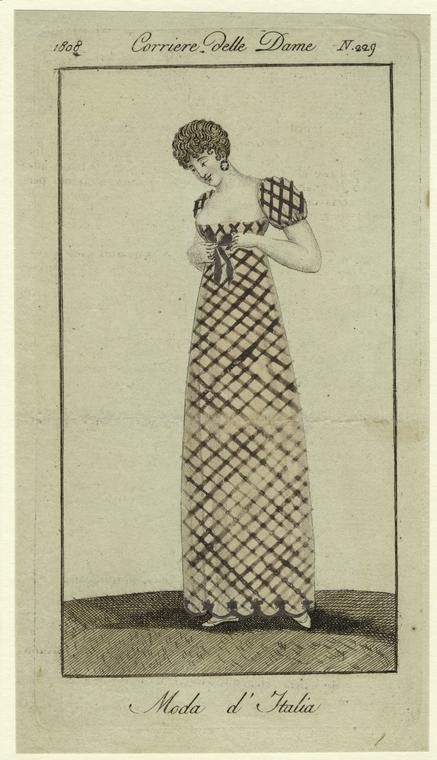







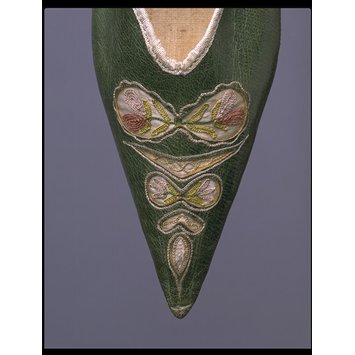


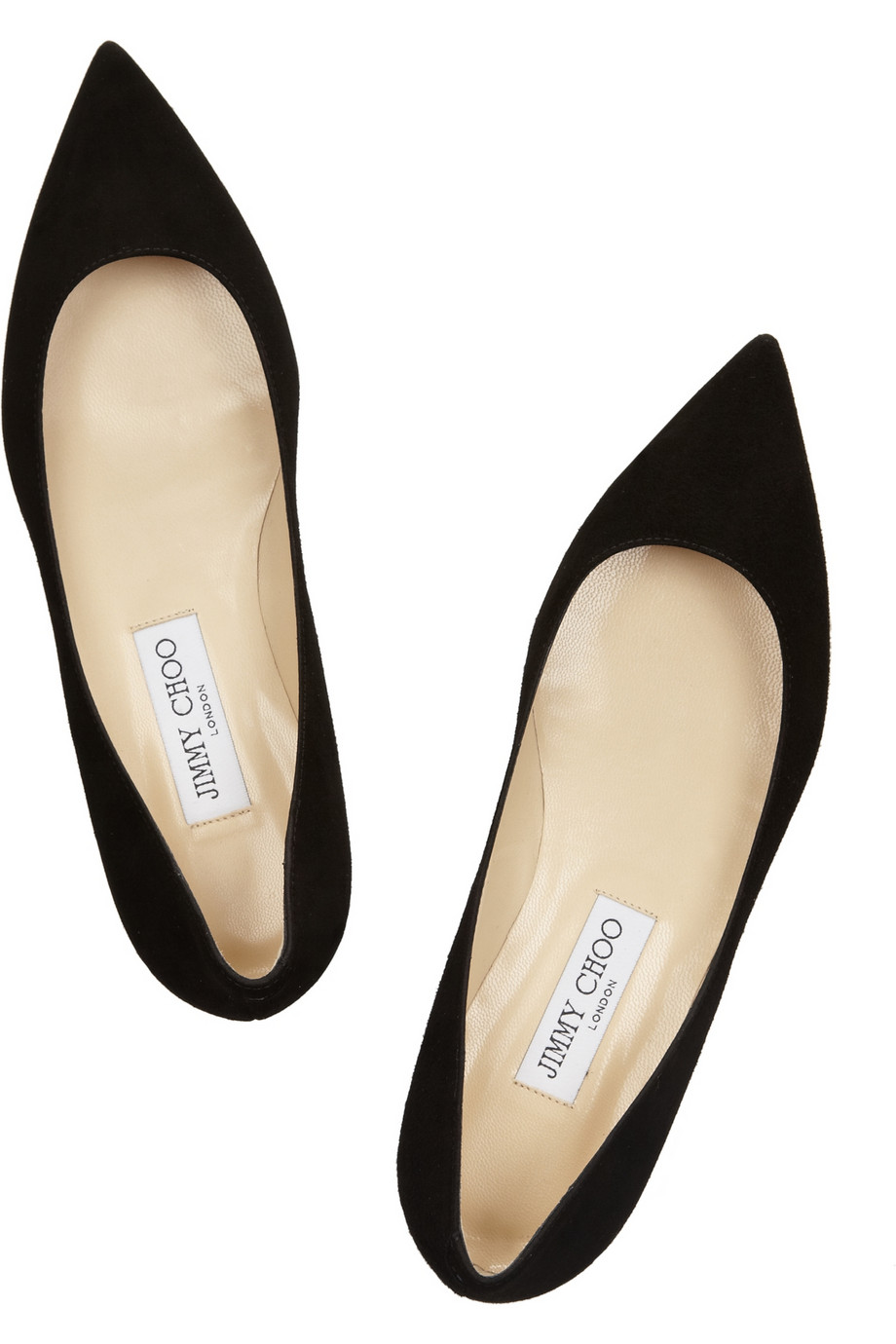
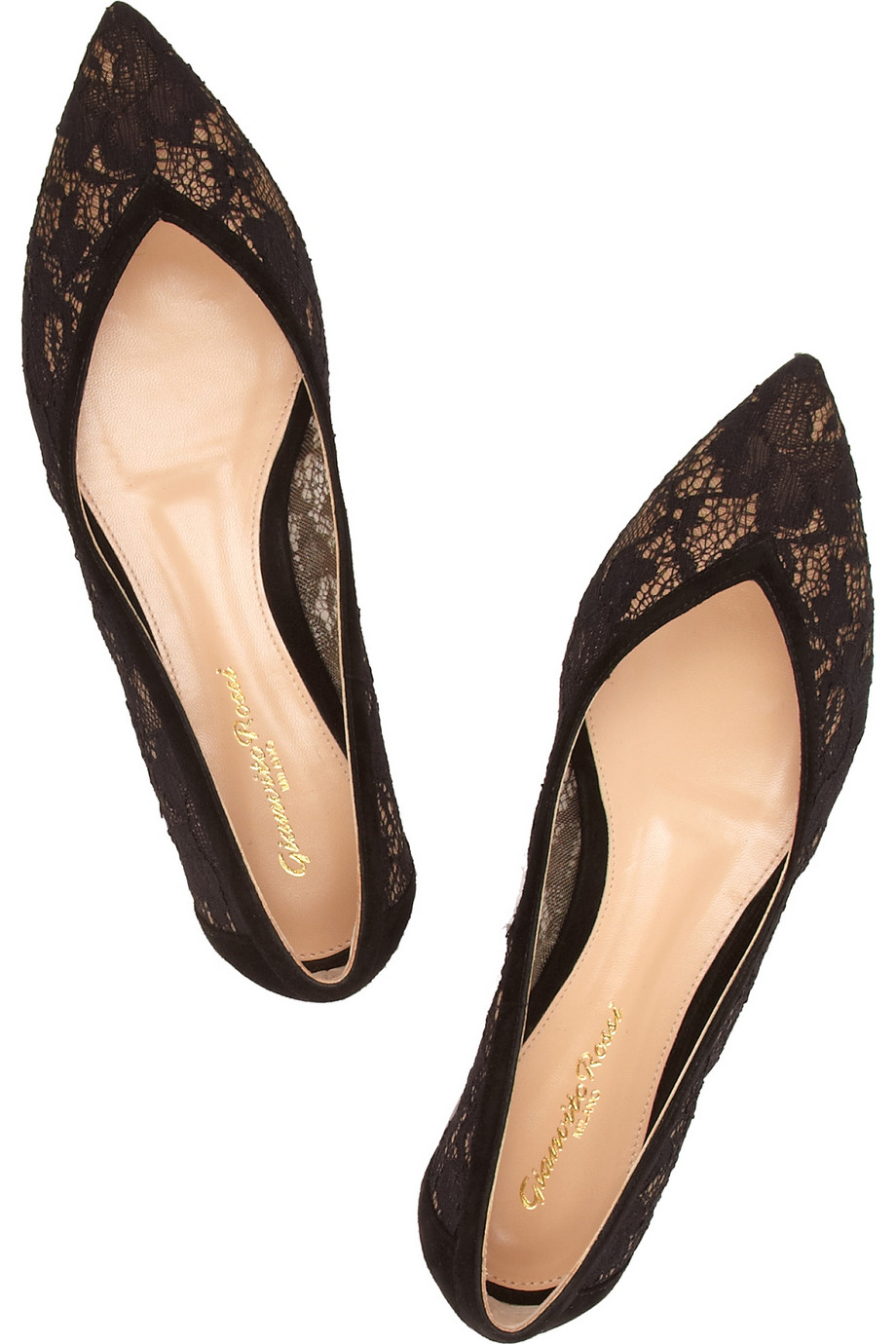
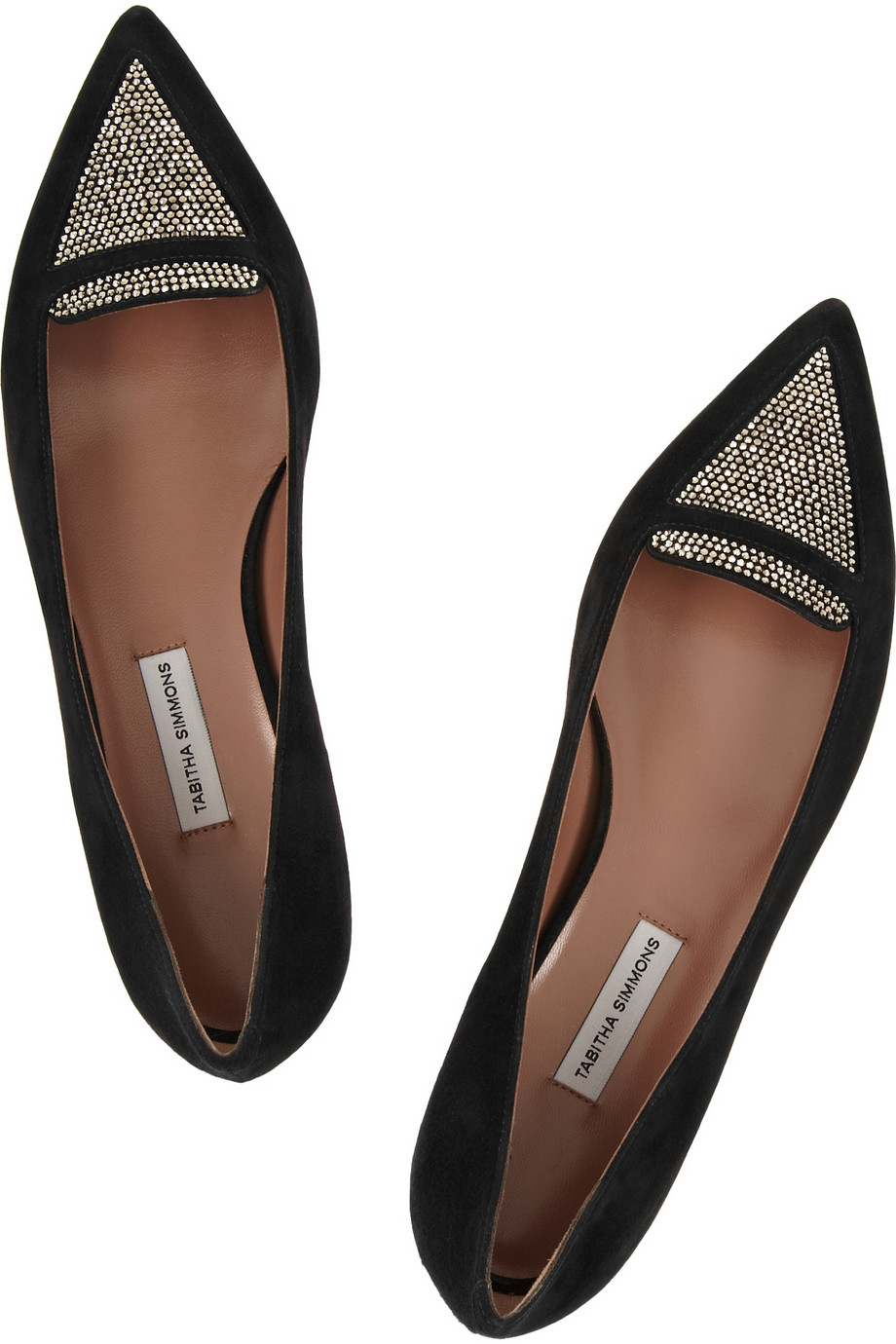
Congratulations! Happy new Year
LikeLike
I lived through a time when pointed shoes were in vogue, my feet suffered! Round toes for me – but I loved the walk down memory lane
LikeLike
My mother got me a pair of pink patent leather shoes for me when I was in the sixth grade. I was suppose to wear them for my moving up ceremony. I hated them. But I wore them anyway to please my mom. Besides those shoes were it. She got them on sale. There was no returning them.
Since then I have had a few that were much more expensive and trendy but I still agree with some old folks from my culture that believe they are to kill bugs huddled in a corner. They align perfectly to get the job done. Interesting post. 🙂
LikeLike
🙂
LikeLike
What research! My husband never understood my pointy heels.
LikeLike
Wonderful and very engaging! I love the wealth of research you put in this article. 🙂 I myself prefer ballerinas over pointy flats, though. Happy new year!
LikeLike
Thanks for the interesting post! Anyone here old enough to remember wearing pointy shoes in the very early sixties?
LikeLike
I could not walk by your post – thanks a lot for picking the sweetest item to write about! And write wonderfully! Come and check out my very own traditional Moroccan pointy shoes: http://homethatwebuilt.wordpress.com/
LikeLike
So interesting! I had the greatest pair of pointy flats in the eighties. Wish I still had them now. I didn’t know there was so much history behind them!
LikeLike
Pointy shoes definitely make the foot look longer and more slender. For cultures that value delicacy as a point of beauty in a woman, the pointy shoe makes sense.
LikeLike
I’ll keep my comfy, clunky Danskos. Thanks. Comfort over fashion–not a big dilemma.
LikeLike
This is quite a research, very interesting and engaging. I don’t know about the other but i really find pointy shoes sexier and classy.
LikeLike
Interesting, informative and wow….
LikeLike
Reblogged this on Sew Everything Blog and commented:
For those who wore pointy flats sometime in their life (early 60s?) and those wearing them now; I’m re-blogging this write up from a fabulous chronicler of fashion history, who digs in item by fashionable item. Enjoy and thanks to the writer of “fashionarcheology”
LikeLike
Love this blog! I studied Fashion and Dress History at University so I am a big fan.
LikeLike
I just found your blog and I adore fashion history! Thank you! Alas the pointy shoe does not become me, hoping the next trend suits me better.
LikeLike
Reblogged this on Sartorial Constructs.
LikeLike
awesome post…i’m not huge history buff but this was really cool
LikeLike
Love the illustrations you have “woven into the fabric” of this marvelous post! Wonderfully written! Following!
LikeLike
I’m old enough to remember wearing pointy shoes in the early 1960s–and then, to my joy, finding rounded-toe shoes in Italy in the mid-60s. Truth is, though, that if a shoe is properly constructed and fit to the foot, the shape of the toe should not interfere with comfort. Just ask anyone who builds or wears properly fitted cowboy boots. That long pointy toe extends past the wearer’s toes before it narrows into the point. It’s a cordwainer’s magic illusion!
LikeLike
Reblogged this on projectwaverly and commented:
FashionArchaeology’s The “pointy flat.” Inspiring
LikeLike
Reblogged this on Sweet 60 and commented:
Shoes are always a highlight.
LikeLike
LOVE LOVE LOVE the Yellow Shoe!!
orthotic shoes
LikeLike
This is so fascinating. Having just written a daft blog about shoes myself, I now feel totally unworthy! Will now follow, thank you.
LikeLike
Hi, just wanted to say, I loved this article. It was inspiring.
Keep on posting!
LikeLike
Love pointy flats. I’m always on the lookout for more!
LikeLike